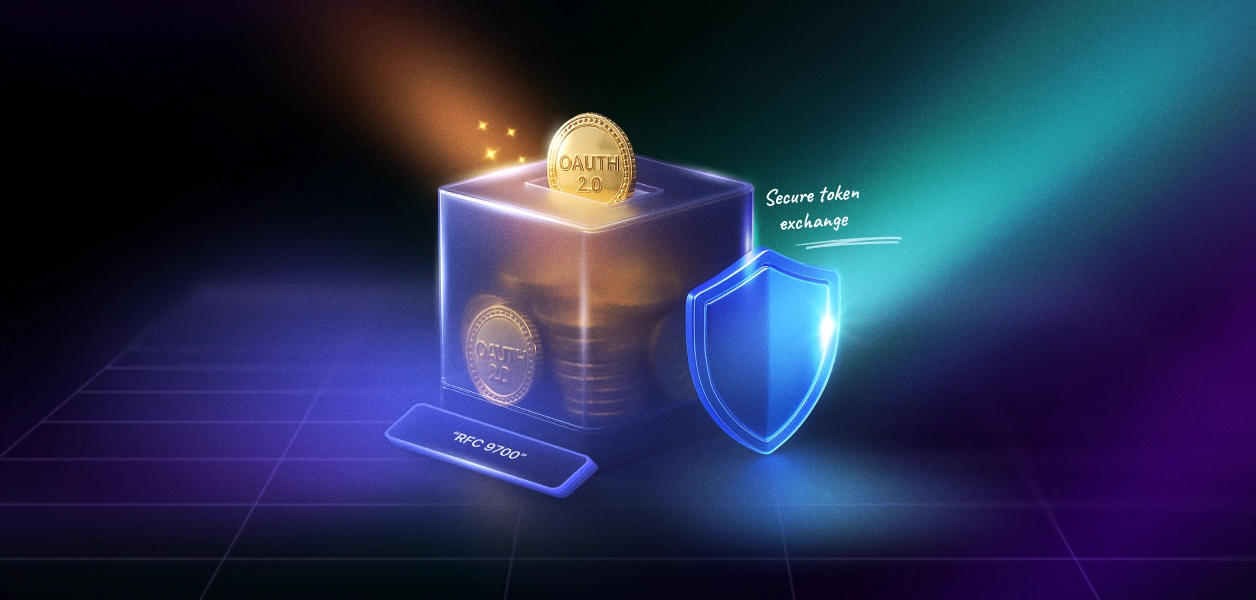OAuth 2.0 token introspection: RFC 7662

Ever had trouble verifying whether an OAuth token presented to your API is still valid?
In OAuth 2.0, tokens are often opaque strings. Random values with no meaningful structure to the resource server. Without a structured token format (like JWT), resource servers and AI agents acting as servers can’t independently validate tokens, leading to potential security risks or constant calls to the authorization server.
RFC 7662 solves this problem by defining a standardized method called token introspection.
What is token introspection, and why use it?
Token introspection allows a protected resource (like your API or an AI agent) to verify the active state and obtain metadata of an OAuth token by querying the authorization server directly. This lets resource servers and AI agents understand if a token is still valid, what scopes it covers, and which user or client it was issued to. The resource owner is the individual whose data is being accessed, and token introspection helps ensure their consent and data protection.
Instead of guessing token validity or assuming indefinite trust, your system can now explicitly confirm a token's status and permissions.
Practical applications of RFC 7662
Token introspection works well in scenarios where resource servers and AI agents require authoritative, real-time verification of tokens. Protected resource calls often require real-time token validation to ensure secure access. Here are some common real-world use cases:
1. Sensitive data access
APIs or agents dealing with sensitive personal, financial, or healthcare information must ensure tokens are valid at every request.
Example: Medical record APIs or AI-powered assistants verifying tokens for each data access to ensure user consent and token validity.
2. APIs and AI agents with immediate revocation requirements
When immediate revocation of token access is critical, introspection allows servers or agents to enforce revoked tokens instantly.
Example: Banking APIs where access must be instantly revoked if a user reports a stolen device.
3. Complex permission management
Systems serving different scopes or fine-grained permissions need real-time scope validation to enforce precise authorization.
Example: A content management API or agent validating tokens before allowing edits, publishes, or deletes.
4. Centralized token management across services and agents
Large-scale applications, microservices, or AI-driven agent architectures benefit from introspection for uniform validation.
Example: An AI agent acting as a resource server validating tokens centrally to maintain consistent, secure authorization.
5. Multi-party integrations for AI agents
AI agents often need to interact with multiple external services on behalf of a user. When receiving tokens from diverse authorization servers, introspection gives the agent a standardized way to validate and understand these tokens without implementing custom logic for each external provider.
Example: An AI sales assistant that coordinates between CRM, calendar apps, and docs.
Why introspection is particularly relevant for AI agents
As more AI agents take on autonomous roles in architectures, they increasingly operate as resource servers, exposing protected APIs or services and receiving OAuth tokens from clients.
- Agents must validate these tokens and understand scopes and permissions before acting.
- When agents can’t access the authorization server’s token store or signing keys (as with opaque tokens), introspection becomes the safest option.
- Agents operating in constrained environments or zero-trust architectures benefit because introspection doesn’t require storing cryptographic keys.
Limitations to keep in mind for AI agents:
- Performance overhead: Each validation requires a network call, which may not suit high-frequency agent operations.
- Authorization server dependency: Agents depend on the authorization server being available.
- Not ideal for agent-to-agent authentication: Most AI agent interactions involve the agent acting as a client rather than a resource server, which makes introspection less relevant in those flows.
The takeaway: introspection is most valuable when your AI agent architecture includes components that need to validate tokens they receive, rather than when agents are primarily making outbound requests.
When not to use introspection
Token introspection may not be ideal if:
- Real-time introspection causes unacceptable latency (e.g., in high-throughput agents).
- Your infrastructure supports structured tokens (like JWT) that can be locally validated.
In these cases, JWT access tokens (RFC 9068) may provide better performance.
Authorization server role
In the OAuth 2.0 token introspection process, the authorization server is the central authority responsible for validating access tokens and providing essential metadata to resource servers. When a resource server needs to verify the status of an access token, it sends an introspection request to the authorization server’s introspection endpoint. This endpoint is specifically designed to handle such requests, ensuring that only authorized resource servers can query token information.
Upon receiving an introspection request, the authorization server examines the access token to determine its active state. This includes checking whether the token is still valid, has expired, or has been revoked. The authorization server also verifies the token’s associated scopes, client information, and any other relevant attributes. If the token is valid, the authorization server responds with an introspection response—a JSON object containing metadata such as the client ID, user ID, scopes, and expiration timestamp.
The introspection endpoint defined by the authorization server is a critical component of OAuth 2.0 token introspection, as it enables resource servers to make informed authorization decisions based on real-time token data. By centralizing token validation and metadata lookup, the authorization server ensures that only valid tokens grant access to protected resources, enhancing the overall security of your OAuth 2.0 implementation.
Resource server and access token validation
Resource servers play a vital role in enforcing access control by validating access tokens before granting access to protected resources. When a client presents an access token, the resource server uses the token introspection endpoint provided by the authorization server to verify the token’s validity and retrieve important metadata. This process begins with the resource server sending an introspection request, which includes the access token and, optionally, parameters like the token type.
The authorization server processes the introspection request and returns an introspection response indicating whether the token is active. If the token is valid, the response includes details such as the client ID, user ID, scopes, and expiration time. The resource server uses this information to determine if the client is authorized to access the requested protected resource, ensuring that only valid access tokens are honored.
Token introspection is especially valuable when dealing with opaque tokens—tokens that do not contain any readable structure or embedded claims. Since resource servers cannot independently validate opaque tokens, the token introspection endpoint becomes essential for secure access token validation. The token introspection extension defined in OAuth 2.0 provides a standardized, secure way for resource servers to validate access tokens and obtain the necessary metadata to enforce authorization policies. By leveraging the introspection endpoint, resource servers can confidently authorize clients and protect sensitive resources from unauthorized access.
Practical example: photo-sharing API
Imagine you’re developing a photo-sharing API (https://api.photoshare.com) used by mobile apps and AI agents to access protected photos. Each app or agent receives an OAuth token after users log in. The resource server must ensure this token is valid before serving sensitive content.
Instead of blindly trusting tokens, your API or AI agent uses token introspection to confirm token validity in real time. The token submitted to the introspection endpoint is typically a string value representing the access token to be validated.
How token introspection works
Step 1: Introspection request
The resource server or agent sends a POST request to the authorization server’s introspection endpoint. The following is a non normative example request illustrating how to perform token introspection.
Example request:
Key request parameters:
token: The OAuth token presented by the client.
Authentication: The resource server must authenticate itself (typically with client credentials or a separate access token).
Note: Optional parameters can be included in the request to provide additional context or information as needed.
Step 2: Introspection response
Following is a non normative example response showing the structure of an OAuth token introspection response as a JSON document. The authorization server returns a JSON response indicating whether the token is active, and additional metadata:
This OAuth token introspection response is a json document where the top level members represent JSON web token claims for the given token, providing detailed metadata as specified in RFC 7662. These claims encapsulate important information about the token, such as its validity, issuer, audience, and associated permissions.
What do these fields mean?
- active: Indicates token validity (true or false).
- client_id: App that requested the token.
- username: Resource owner's identifier (human-readable).
- scope: Permissions associated with the token.
- exp: Expiration timestamp.
- iat: Issued-at timestamp.
- sub: Subject identifier (typically user ID).
- aud: Intended audience (API endpoint).
- iss: Authorization server issuing the token.
If the token is inactive (revoked, expired, invalid), the response simply returns:
Inactive token response:
Error handling example
If the resource server's authentication credentials for introspection are invalid or missing, it will get an error response:
Make sure your introspection requests are properly authenticated to avoid such errors.
Security considerations and best practices
Secure introspection endpoint
- Always use HTTPS (TLS) to protect introspection requests and responses.
- Authenticate resource servers strongly (client credentials or dedicated tokens).
Minimize data exposure
- Avoid exposing sensitive data unnecessarily. Return minimal metadata in introspection responses.
- Return active:false without detailed errors for inactive or unknown tokens to prevent information leakage.
Caching introspection responses
Cache responses to reduce load and latency but balance carefully:
- Short-lived caching (seconds/minutes) for sensitive APIs.
- No caching if immediate revocation checks are critical.
Avoid token scanning attacks
- Limit introspection endpoint access to trusted resource servers.
- Implement rate-limiting on introspection calls.
For more best practices, head over to this blog post.
Common developer mistakes (and how to avoid them)
Mistake: Not authenticating introspection requests
Correct: Always authenticate resource servers:
Mistake: Overexposing information in responses
Correct: Return minimal details for inactive tokens
Edge cases to consider
- Token revocation can introduce latency. Decide carefully how long your API caches introspection results.
- Be aware that introspection adds overhead: evaluate its impact on high-volume APIs.
- When access tokens expire, handle edge cases by using refresh tokens to obtain new access tokens from the token endpoint. Ensure your implementation securely manages refresh tokens and supports token renewal workflows.
- Always verify that a valid access token is used in all protected resource calls, especially in high-volume or latency-sensitive scenarios, to prevent unauthorized access and maintain security.
Conclusion: empower your APIs and AI agents with RFC 7662
OAuth 2.0 Token Introspection (RFC 7662) provides a standardized, secure, and explicit way to verify OAuth token validity in real time.
For developers building APIs and AI agents, RFC 7662 is a critical tool when your agents:
- Act as resource servers receiving tokens they need to validate.
- Enforce fine-grained scopes and permissions dynamically.
- Operate in environments where storing cryptographic keys isn’t possible.
When your architecture demands real-time, authoritative validation of opaque tokens, especially for AI-driven, multi-party, or agentic systems, RFC 7662 is the right choice.
By adopting RFC 7662, you enable your APIs and agents to make safer authorization decisions, keeping every token check trustworthy and consistent.








.webp)




